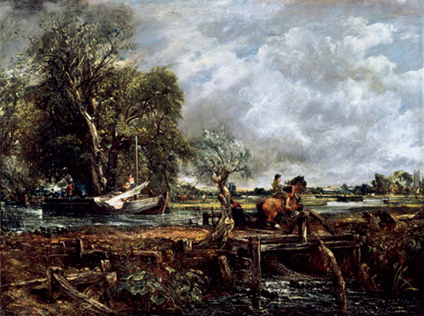What is a great Constable? Not just a pretty piece of landscape painting by a talented observer of Eng-lish scenery; not just a picture of trees and water and weather. It is a vivid and emotionally complicated thing, a dark eruption of memory and longing. The Tate Gallery's Constable exhibition gathers together some 344 paintings, drawings and prints. His works have never been seen in such quantity before, but at no point do they begin to pall. They are fierce and wonderful objects.
This exhibition is important partly for scholarly reasons but mostly because it sets the record straight. It establishes Constable as not merely the greatest and most radical of all English painters (Turner included), but as one of the most remarkable painters in history.
The Hay-Wain is his most famous picture but the high point of this show is another pair of works: The Leaping Horse and the full-scale oil sketch for it. They are encountered about half-way through the Tate show, which is appropriate because they are the hub of his painting, the centre around which everything else that he did seems to revolve.
The painter's subject, as usual, is nothing much: ''Scene in Suffolk,'' as Constable described it to a pro-spective buyer in 1825, ''banks of a navigable river - barge horse leaping on an old bridge under which is a flood-gate.'' This flat description is entirely belied by the grandeur of the paintings themselves, and particu-larly the oil sketch, which Constable has painted with such intensity.
Look at the way the figures on the left in the foremost barge are modelled, as dark, almost inchoate sil-houettes struggling out of the murk of the trees gathered behind them. Look at that windswept sky, paint whipped up into a turmoil of cloud. Look at the horse, that...


